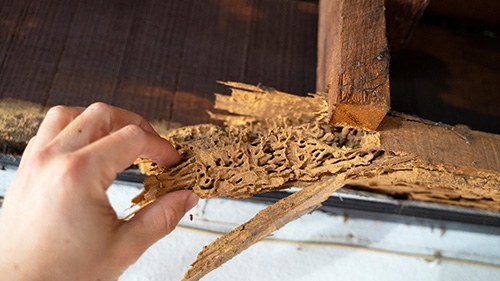Termite infestations can cause significant damage to your property if not detected and treated early. As a homeowner, it is crucial to be proactive in identifying signs of termite activity to prevent costly repairs. In this blog post, we will provide you with a comprehensive termite inspection checklist that will help you spot signs of infestation early. By following these steps, you can protect your home and ensure peace of mind.
Exterior Inspection:
Start by examining the exterior of your property for any visible signs of termite activity. Look for the following indicators:
- Mud tubes: Termites construct mud tubes to travel between their nest and food sources. Check for these pencil-sized tubes along the foundation, walls, or other wooden structures.
- Discarded wings: After swarming, termites shed their wings. Finding discarded wings near windowsills, doorways, or light fixtures can be a sign of an infestation.
- Wood damage: Inspect wooden structures, such as decks, fences, or tree stumps, for any signs of wood damage, including hollowed or sagging wood.
Interior Inspection:
Move indoors and thoroughly inspect the interior of your property. Pay close attention to the following areas:
- Window and door frames: Check for any cracks, bubbling paint, or sagging wood around windows and doors, as these can indicate termite activity.
- Wooden furniture: Examine wooden furniture, especially in areas with high moisture, such as bathrooms or basements. Look for blistering or peeling paint, tiny holes, or sawdust-like frass.
- Attic and crawl spaces: Inspect these areas for termite droppings, damaged wood, or mud tubes. Use a flashlight to thoroughly examine all nooks and crannies.
Moisture Control:
Termites thrive in moist environments. By controlling moisture levels in and around your home, you can deter termite infestations. Consider the following tips:
- Repair leaks: Regularly check for and repair any leaks in pipes, faucets, or roofs to prevent excess moisture buildup.
- Proper ventilation: Ensure that attics, crawl spaces, and basements are adequately ventilated to reduce humidity levels.
- Remove standing water: Eliminate any standing water around your property, such as in gutters, flower pots, or birdbaths, as it attracts termites.
Professional Termite Inspection:
While conducting your own inspection is essential, it is equally important to schedule regular professional termite inspections. Trained pest control experts, like Green Wing Services, have the knowledge and tools to detect hidden termite infestations that may go unnoticed during a DIY inspection. They can also provide effective treatment options tailored to your specific needs.
Termite Prevention:
Prevention is key to avoiding termite infestations. Consider implementing the following preventive measures:
- Maintain a termite barrier: Regularly inspect and maintain any termite barriers or treatments around your property.
- Keep wood away from the foundation: Avoid direct contact between soil and wooden structures by maintaining a gap or using concrete or metal barriers.
- Remove wood debris: Keep firewood, lumber, or other wooden debris away from your home's foundation to reduce the risk of termite infestation.
By following this termite inspection checklist and taking preventative measures, you can significantly reduce the risk of termite damage to your property.
If you suspect a termite infestation, contact Green Wing Services for a thorough inspection and effective treatment.

